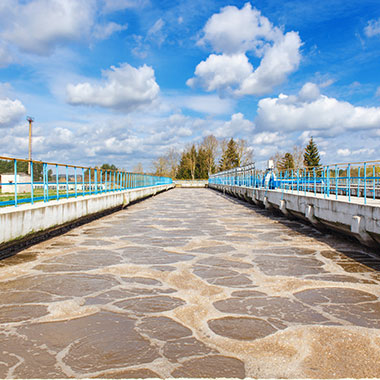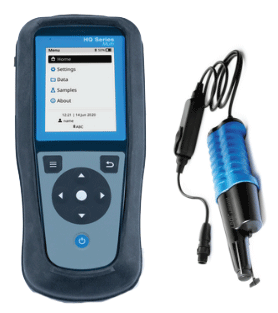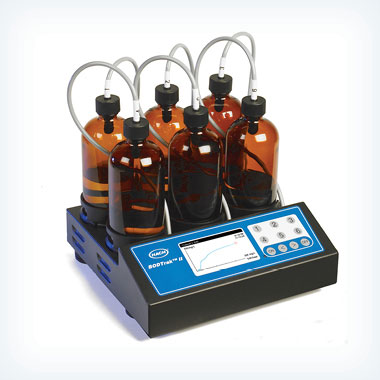-
Products
- Lab Instruments
- Lab Meters and Probes
- Chemistries, Reagents, and Standards
-
Online Analyzers
Ammonium Analysers Ammonia Monochloramine Chlorine Analyzers
- CL17sc
- CL10sc Amperometric
- 9184 sc Amperometric
- Ultra Low Range CL17sc Colorimetric Chlorine Analyser
EZ Series Analysers- Iron
- Aluminium
- Manganese
- Phosphate
- Chloride
- Cyanide
- Fluoride
- Sulphate
- Sulphide
- Arsenic
- Chromium
- Copper
- Nickel
- Zinc
- Ammonium
- Phenol
- Volatile Fatty Acids
- Alkalinity
- ATP
- Hardness
- Toxicity
- Sample Preconditioning
- Boron
- Colour
- Nitrate
- Nitrite
- Silica
- Hydrogen Peroxide
- EZ Series Reagents
- EZ Series Accessories
- EZ sc Series Inorganics
- EZ sc Series Metals
- EZ sc Series Nutrients
- Flow
-
Online Sensors and Controllers
Digital Controllers (Transmitters) Controllers (Analog)
- SC4500
- CA9300 Series Analog Transmitters
- Orbisphere 410/510 Carbon Dioxide
- Orbisphere 410/510 Oxygen
- Pro Series
pH & ORP Sensors- 12mm pH/ORP
- 8362 sc High Purity
- Combination pH/ORP
- Differential pH
- Digital Differential ORP
- Digital Differential pH
- LCP ORP
- LCP pH
- Sampling
- Multiparameter Online Panels
- Claros Water Intelligence System
- Test Kits & Strips
-
Microbiology
Prepared Media
- BARTS
- Liquid MPN
- MUG Tube
- Membrane Filtration
- Paddle Testers
- Presence-Absence
- Total Count Media
- Yeast and Mold
Dehydrated Media Kits Cryptosporidium & Giardia Analysis Legionella pneumophila Test Pseudomonas aeruginosa TestLabware- Accessories
- Funnels, Pumps & Manifolds
- Microbiology Filters
- Petri Dishes & Accessories
- Sampling Bags
- Vials, Tubes, Bottles & Racks
- Comparators
- Microbiology Accessories
- Microbiology Chemicals
- QC: Microbiology
- Quanti-Trays
- Sealer and Rubber Inserts
- UV Lamps
- Vessels
-
Lab Equipment and Supply
Apparatus
- Brushes
- Clamps, Rings & Stands
- Crucibles
- Crucibles & Casseroles
- Dispensers & Droppers
- Grab Samplers
- Oil and Grease
- Other Apparatus
- Pipet Aids
- Pipettes
- Racks
- Stir Bars
- Tubing
- Weighing Accessories
Instruments- Balances
- Hot Plates & Stirrers
- Microscopes
- Moisture Analysers
- Other Instruments
- Ovens & Incubators
- Thermometers
- Timers
- Vacuum Pump
- Automated Lab Systems
-
Environmental
Accessories Ambient Weather
- Kipp & Zonen Pyrgeometer
- Kipp & Zonen Scintillometer
- Lufft Ultrasonic Wind Sensor
- Lufft WS Series Smart Weather Sensor
- Lufft WS10 Series
Visibility and Present Weather Detection Hydrology Software Hydrology Water Discharge - Flow Road and Runway Sensors Solar Tracking and PV SoilingWater Level- OTT CBS Compact Bubbler Sensor
- OTT PLS Pressure Level Sensor
- OTT PLS(-C) Pressure Level Sensor with Conductivity
- OTT RLS Radar Level Sensor
- SUTRON Accubar Pressure Level Sensor
- SUTRON Constant Flow Bubbler
- SUTRON SDR Stage Discharge Recorder
Data Loggers and Telemetry- ADCON - Wireless Radio Communication / Telemetry
- Kipp & Zonen Data Logger
- SUTRON Antenna
- SUTRON SatLink 3 Logging Transmitter
- SUTRON XLINK 100 Logging Transmitter
- SUTRON XLINK 500 Logging Transmitter
- SUTRON XLite 9210 Datalogger
- SUTRON Xpert2 Datalogger
- Industrial UV
- Marine
- Municipal UV
- Parameters
- Applications
- Industries
- Brands
- Service & Support
- News & Events
Hach Malaysia
Choose your country or region:
Europe
Americas
Asia - Australasia
- Australia
- Mainland China
- India
- Indonesia
- Japan
- Malaysia
- New Zealand
- Philippines
- Singapore
- South Korea
- Thailand (Thai)
- Taiwan
- Vietnam
Middle East - Africa
Chemistries 603-2779 2080
Biochemical Oxygen Demand (BOD)
What is Biochemical Oxygen Demand (BOD)?
Biochemical oxygen demand (BOD) represents the amount of oxygen consumed by bacteria and other microorganisms while they decompose organic matter under aerobic conditions at a specified temperature.
BOD is used to gauge the short-term impact wastewater effluents will have on the oxygen levels of receiving water. BOD is used as a representative of the organic oxygen demanding portion of wastewater at various locations throughout the process from influent to effluent. BOD can also be used to model treatment plant processes to increase the efficiency and effectiveness of wastewater treatment.
COD versus BOD
Like BOD, chemical oxygen demand (COD) can be used to estimate the amount of organic loading in a water sample. COD describes the amount of oxygen required to chemically breakdown the pollutants, while BOD indicates the amount of oxygen required to breakdown the pollutants, biologically with microorganisms.
Why Measure Biochemical Oxygen Demand?
Biochemical oxygen demand, otherwise known as biological oxygen demand, is an important parameter in water treatment. When effluent wastewaters are discharged into the environment, they can introduce pollution in the form of organic content to receiving waters. High concentrations of organics can deplete dissolved oxygen levels in water, leading to negative environmental and regulatory consequences.
To help determine the impact and ultimately limit the amount of organic pollution in water, BOD is an essential measurement. USEPA also allows the use of total organic carbon (TOC) when it is correlated with BOD or COD.
At Hach ®, find the testing equipment, resources, training and software you need to successfully monitor BOD in your specific process application.
Featured Products for Monitoring Biochemical Oxygen Demand
Hach BOD instruments combined with Hach BOD reagents for BOD testing, help wastewater treatment plants achieve optimum BOD measurement.
Learn MoreHach is dedicated to providing high-quality reagents for routine and challenging water analysis.
Learn MoreHach offers natural convection ovens and muffles furnaces. Natural convection ovens are ideal for drying, sterilizing, baking, annealing, conditioning, evaporating and dehydrating.
Learn More
Which Processes Require Biochemical Oxygen Demand Monitoring?
Municipal and Industrial Wastewater Treatment
Influent waters entering wastewater plants are high in organics and the wastewater plant must reduce the "organic loading" before discharging water back into a receiving body.
Oxygen demand is useful for measuring waste loadings, evaluating the efficiency of the treatment processes, and ensuring effluent compliance.
-
Primary Treatment
Clarifiers, or sedimentation basins, slow the flow of the wastewater to allow suspended solids to settle. Surface skimmers collect any floating fats, oils and greases. With the use of this mechanical and physical means, approximately 30% of organic matter is removed from the wastewater and is routed to the solids management area of the plant. Clarifiers, or sedimentation basins, slow the flow of the wastewater to allow suspended solids to settle. Surface skimmers collect any floating fats, oils and greases. With the use of this mechanical and physical means, approximately 30% of organic matter is removed from the wastewater and is routed to the solids management area of the plant. By monitoring BOD in the primary treatment, the wastewater facility can control the efficiency of this process.
-
Secondary Treatment
This process uses living organisms to aid in reducing organics. In the aeration basin, bacteria and microorganisms convert biodegradable organic matter to carbon dioxide and water. With this conversion, organics are reduced, therefore reducing oxygen demand.
-
Discharge Limits
Discharge limits vary from plant to plant depending on the characteristics of the receiving water, effects on aquatic life, recreational uses and other factors. Discharge permits may stipulate a specific maximum effluent concentration for BOD or COD, pounds loading, and/or a percent removal.
For compliance, it’s necessary to measure BOD or COD of the influent water as it enters the plant, before mechanical screening processes, and at the effluent of the facility at the designated discharge sample location. If the oxygen demand of effluent exceeds discharge limits, regulatory agencies may impose fines. USEPA also allows the use of TOC when it is correlated with BOD or COD.
When selecting a method for analyzing oxygen demand, it’s important to consider the following:
- Specific testing application
- Oxidant that will be used
- Test completion time
- Accuracy and precision of the measurement

How is Biochemical Oxygen Demand Monitored?

Dilution Method
Benchtop:
HQ430D Laboratory BOD Meter Package
Portable:
Winkler Titration:

Respirometric or Manometric Method
BOD Testing Limitations:
- BOD involves a lengthy test period of five days.
- Microorganisms cannot oxidize all organic materials in waste.
- Toxic materials in the water can kill microorganisms.
- This method is not considered highly accurate, with a 15% relative standard deviation.
Frequently Asked Questions
What is seed, and how is it used in the BOD dilution method?
The term "seed" refers to microorganisms that consume the biodegradable organic matter in samples for measurement of BOD. Domestic wastewater (influent and effluent) from biological water treatment plants (before disinfection), provide the best source of seed and give the most reproducible results. Other sources, such as industrial wastewater, may not have enough microorganisms or may contain toxins that prevent the organisms from growing. If wastewater is not available, prepare a seed solution from a freeze-dried capsule such as PolySeed ®. Whatever source of seed is used, it will exert some demand. Therefore, a seed control must be measured to correct for this demand. Older versions of the standard methods for the examination of water and wastewater indicated that dissolved oxygen (DO) uptake of seeded dilution water should be between 0.6-1.0 mg/L; newer versions indicate a minimum of 2.0 mg/L. Refer to the current standard methods or your local regulatory official to verify this requirement.
When determining BOD, it is necessary to have a population of microorganisms that can oxidize (or consume) the biodegradable organic matter present in the sample. If there is too little seed present in the sample, complete consumption of biodegradable matter may not occur, resulting in inaccurate results. In samples such as influent samples and effluent waters prior to disinfection, this is not a problem as the sample will contain sufficient bacteria to do the job. However, in certain sample types (such as some industrial wastes, high temperature wastes and treated effluent), there is not enough bacterial activity to consume the material that is present. In these cases, seed must be added. Seed is simply a solution that contains a sufficient population of bacteria. Hach offers PolySeed ®, a seed capsule that can be added to samples.
Seed requires proper pH, temperature control and nutrients such as phosphorus, calcium and magnesium for proper growth. Hach nutrient buffer pillows provide the necessary nutrients and pH.
What is the best water source to use for sample preparation and dilution following the BOD method?
Quality dilution water is very important when testing BOD, as any contamination in the water will cause problems with the test.
Distilled and deionized water are commonly used in BOD testing. However, the most practical way to consistently produce water of low organic content is by distillation with alkaline permanganate. Commercial stills can be set up to produce high-quality distilled water automatically. When a still is fed with chlorinated water, some chlorine may distill over with the water. If this occurs, the chlorine must be destroyed using thiosulfate.
It is not recommended to use deionized water from an ion exchange column. Experience has shown that deionized water, particularly from a new demineralizer with new resin, often contains substantial amounts of organic matter, that is released intermittently and is undetectable with a conductivity water purity gauge. Also, the large surface-to-volume ratio that exists in the columns because of the resin beads, encourages bacterial growth in the column.
What kind of seed sources are available for BOD testing?
For testing BOD, there are several different reasonable sources for seed material. The following are some of the most used:
Plant Influent – If the plant has a stable influent, this is often the most successful seed source. For many plants, the primary influent is reliably a particular value. If the influent is stable and is mostly domestic in origin, consider this as the first seed source.
- It is recommended to settle the seed before use by placing the seed in a covered beaker in an incubator overnight.
- Decant off the particle free seed for use in samples that need seed.
Primary Effluent – Effluent from the primary clarifier is another very good source for seed. It has an advantage over influent in that it is "settled" seed, so most particulates are not present in the seed. This eliminates the settling step.
Final Effluent (prior to disinfection) – If the effluent is sampled prior to disinfection, it may not be necessary to seed the effluent. Many facilities will still need to run glucose and glutamic acid (GGA) standards, so the final effluent is an excellent choice in this case.
- It is recommended to allow the seed to acclimate to room temperature before use. Shake the effluent to help the seed acclimate to room temperature.
- Add 300 mL nutrient pillows to the bottle directly since final effluent may be nutrient deficient.
Artificial Seed – Artificial seed often does not work. If GGA values are low, the artificial seed is most likely the culprit (even if it's been used for years).
- It is recommended to use other types of seed.
- If one must use artificial seed, be sure to follow the vendor's recommendation.
- Seed as high as possible (for example, 1.2 mg/L of depletion).
- Allow as much time as possible for the seed to "wake up" from its freeze-dried state prior to use (but after hydration).
- Add a small quantity of influent or primary effluent to the seed while hydrating it.
Dirt – Often overlooked, soil is a good source of seed material. The bacteria that perform the BOD tests are actually soil bacteria. If none of the other seed sources are adequate, consider experimenting with soil.
- Prepare 500 mL of dilution water (with buffers) in a 1000 mL beaker.
- Place a stir bar into the beaker and keep the water stirred actively.
- Obtain about 20 grams of soil from an actively growing lawn area.
- Place the 20 grams of soil into the 500 mL beaker.
- Allow approximately 1/2 hour of mixing.
- Filter and decant the water into a second 1000 mL beaker.
- Use the solution as a seeding solution.
What is the recommended seed contribution for BOD?
When testing BOD, standard methods recommend that the seed contribution be 0.6-1.0 mg/L oxygen depletion, though this can be adjusted to ensure GGA standards read 198 +/- 30.5 mg/L.
Why not simply measure TOC to assess organic load?
TOC measures organic carbon but different organic carbons will generate different oxygen demand. Measuring TOC alone will not necessarily indicate how much oxygen will be consumed by the organics in the environment. For example, oxalic acid and ethanol produce identical TOC results. However, due to different oxidation states, the oxygen demand of ethanol is 6 times greater than oxalic acid, meaning ethanol will have a greater effect on the dissolved oxygen content of a receiving water. Measuring oxygen demand rather than TOC produces a clearer picture of how the receiving waters will be affected by the organic-containing wastewaters.
PRODUCT SUPPORT
CUSTOMER SERVICE
RESOURCES
ABOUT US
Looking for our Hach US Site?
It appears that you are visiting Hach from the United States but the site you are currently visiting is for Malaysia.
Would you like to visit the Hach US site instead?



